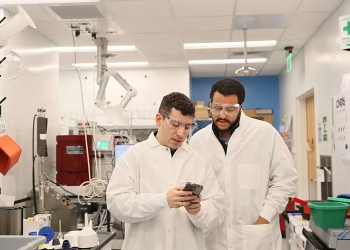A new method for diagnosing illnesses in children has been unveiled by researchers from Imperial College London. This offers the potential for rapid and precise treatment selection by medical practitioners.
In a document, the new approach demonstrates a diagnostic accuracy exceeding 90%.
Professor Michael Levin, co-author of the study and head of the pediatric department at Imperial, remarked that this innovative approach possesses the capability to revolutionise the realm of healthcare.
Presently, the method is undergoing trials involving thousands of patients across medical facilities in Europe, Africa, and Asia.
The study identifies that looking at gene patterns in someone’s blood could speed up diagnosis because the human body needs the same set of genes to fight off diseases, researchers could use that as a basis to test for them.
The research team, however, underscores the necessity for further advancements before the practical implementation of this testing procedure.
The rationale for the research
The impetus behind this research arises from the complexity associated with pinpointing the origin of fevers, whether they stem from viral infections, bacterial agents, or other factors. Also, the process of discerning the cause of a fever often extends over days or weeks, resulting in considerable delays before conclusive results are obtained.
Dr Myrsini Kaforou, a co-author of the study and a senior lecturer at Imperial College London, emphasized that uncovering the underlying source of a fever poses a substantial challenge, even when employing the most advanced diagnostic tests.
Furthermore, these tests can demand varying periods, ranging from several hours to weeks, to furnish outcomes.
Such delays in diagnosis can impede the timely identification of potentially life-threatening infections and ailments, including sepsis, tuberculosis, and pneumonia, thereby hindering the prompt administration of appropriate treatments to patients.
She therefore highlighted the benefits of this new approach saying,
“A future diagnostic test based on this approach could help provide the right treatment, to the right patient, at the right time, while optimizing antibiotic use and reducing lengthy time to diagnosis for inflammatory diseases”.
Further research needed
Professor Damian Roland, a pediatric emergency physician affiliated with the University Hospitals of Leicester, expressed that achieving the capability to swiftly ascertain the fundamental cause behind a child’s fever or ailment represents a global goal.
He regarded it as having a huge potential to inaugurate a novel paradigm of healthcare delivery. Nevertheless, Professor Roland stated that the advancement of this approach is still in its initial phases.
“Further research in avoiding any unintended consequences of early diagnosis will be vital to maximise the impact of this innovation,” the professor said.
Outcomes if successful
If trials prove successful and the methodology receives approval, the blood test has the potential to curtail the excessive utilization of antibiotics.
Presently, antibiotics are frequently prescribed even to ill children, despite their effectiveness being limited to bacterial infections and not viral ones. Such a blood test could aid in distinguishing between these types of infections.
Addressing the overuse of antibiotics holds significance due to its contribution to the escalating issue of antimicrobial resistance.
This phenomenon denotes the circumstance in which medications lose their efficacy in treating infections they were originally designed to combat.
































